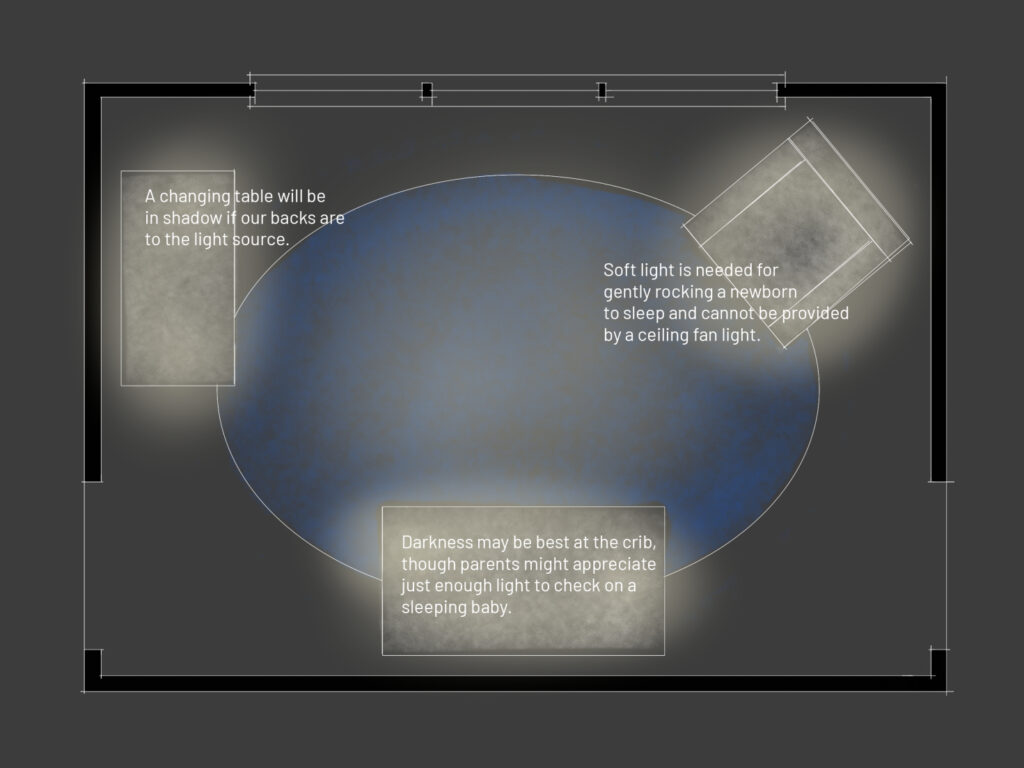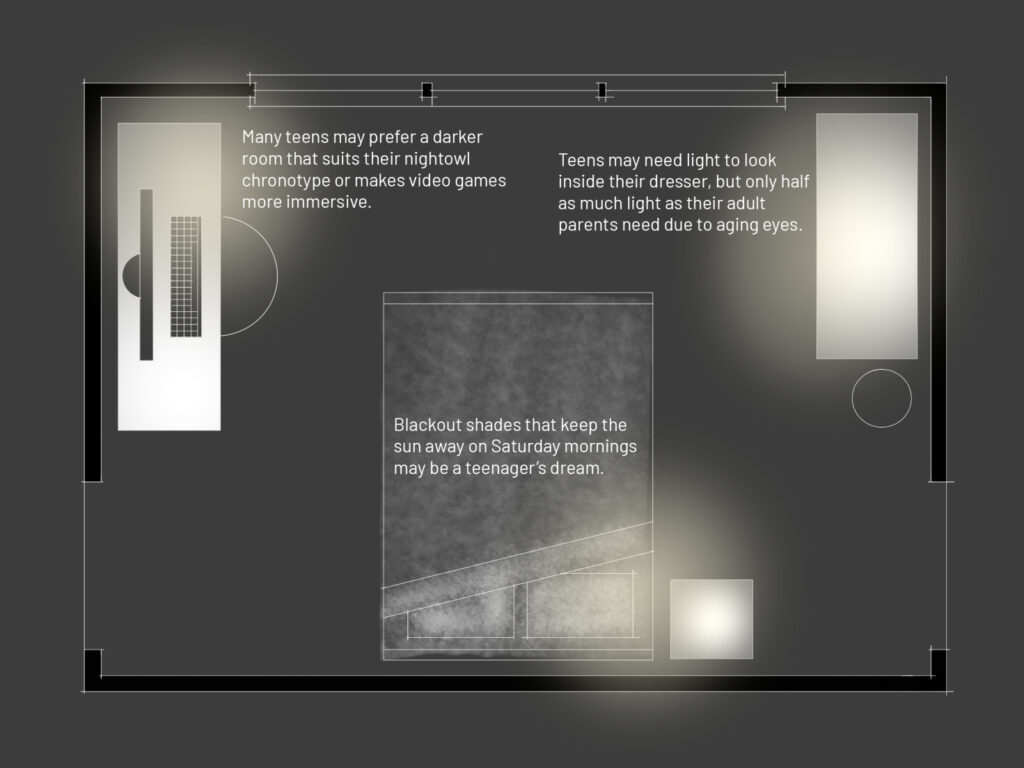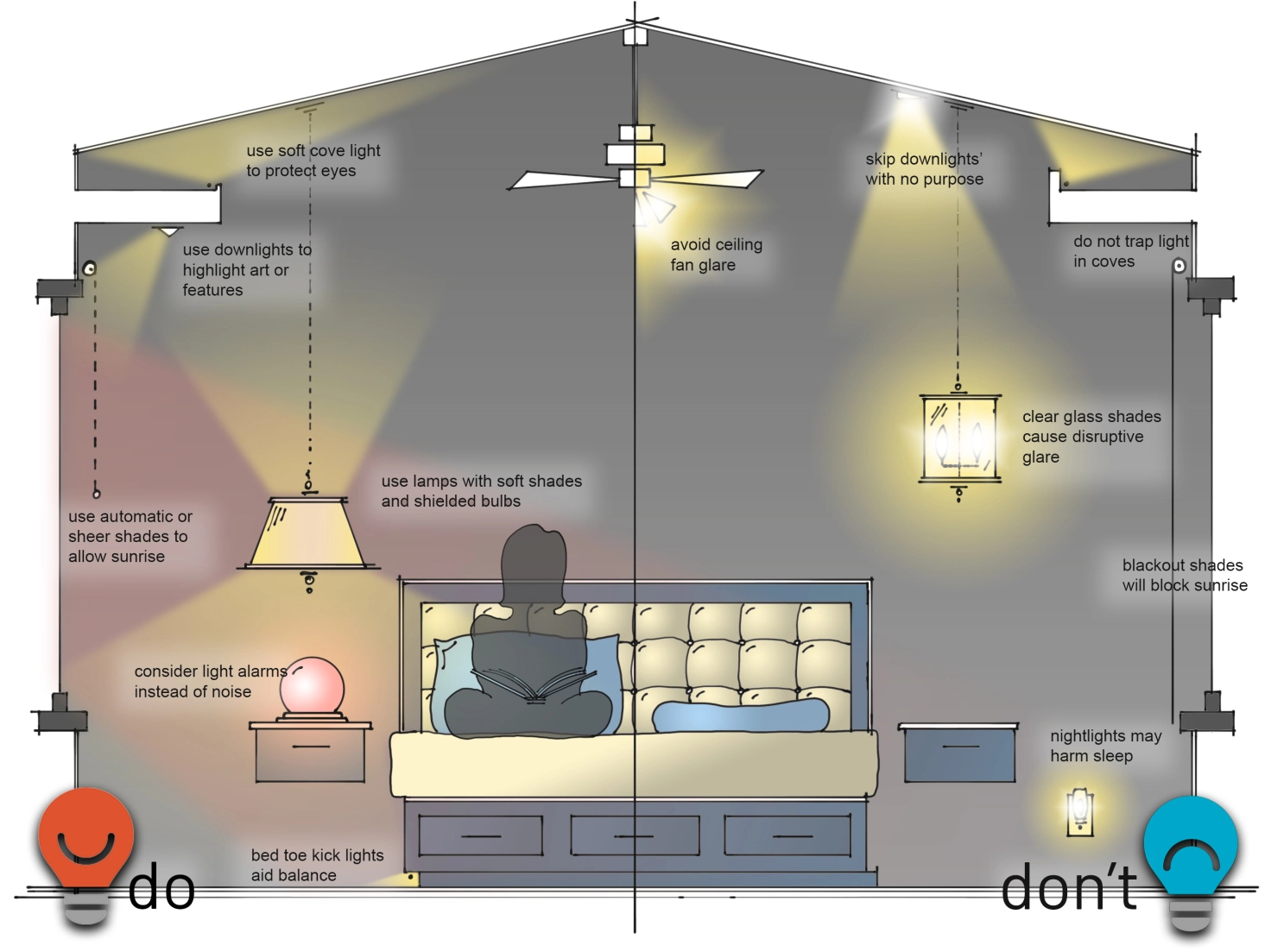We have a certain number of formulas for illuminating a bedroom. We layer in lighting to deliver our five promises of light in these rooms just as we would anywhere else in the home. The solutions are different in a bedroom than in a kitchen because the function and form of each space is vastly different, but the intention is the same. We want you to live a happier and healthier life.
It is all too easy to lump bedrooms into a single category, planning the same lighting for all of them. It is even easier to say “this is the master suite” and the rest are “just the kids’ rooms.”
If all “masters” and “kids” were the same, this would not be a problem. Yet our home has two masters (my wife and me) and two kids (our two sons). And each of these stakeholders is different. One solution for “kids’ rooms” will not suffice.
Light needs to support us every day and our needs change from moment to moment and year to year. My wife and I spend very little time in our bedroom during the day. We use our room for sleeping, dressing, and…a few other things.

Children, on the other hand, often spend many waking hours in their rooms. Some read, some play video games, some are attached to a computer, some build with Lego, some play with trains, some host tea parties, some fight dragons, some text with their friends, some talk on the phone, some craft necklaces….
And yet lighting in their bedrooms is often the same regardless of age & interest. At worst, it is what we call CFLS, or Ceiling Fan Light Syndrome. The room has one ceiling fan with a light kit that evenly distributes uncomfortable glare throughout the room. This serves none of our children’s needs well.
In high-end homes CFLS is often replaced with 4CnF, or Four Cans and a Fan. The cans- recessed downlights- illuminate the carpet but leave most of the promises of light unmet.
And every kids’ bedroom fails to acknowledge one undeniable fact.
Kids grow up.

Lighting for a toddler playing with blocks could be very different than lighting for a teen texting their friends. Lighting for a ten-year-old crafting with rocks and glue could be very different than lighting for an 18-year-old writing a final paper. And these could all be the same child in the same room over a span of just a few years.
So why is our lighting so stagnant, so fixed, so utilitarian? Why is it installed as if no one thought about the comfort of the occupant or how they might change over the years?

That’s it, really. We could strip away the “as if” and say only that no one has thought about the comfort of the occupant and how they might change over the years…at least when it comes to how their eyes might need different light.
We struggle to convince clients that the kids’ bedrooms need just as much attention and thought as the master suite. Perhaps the kids’ rooms need even more, as they might get far more use than the master. So over and over again we see bedrooms built with CFLS or 4CnF. Those solutions are familiar, cheap and easy to install.
Which seems to be more important than whether or not they work.
We can change that.
